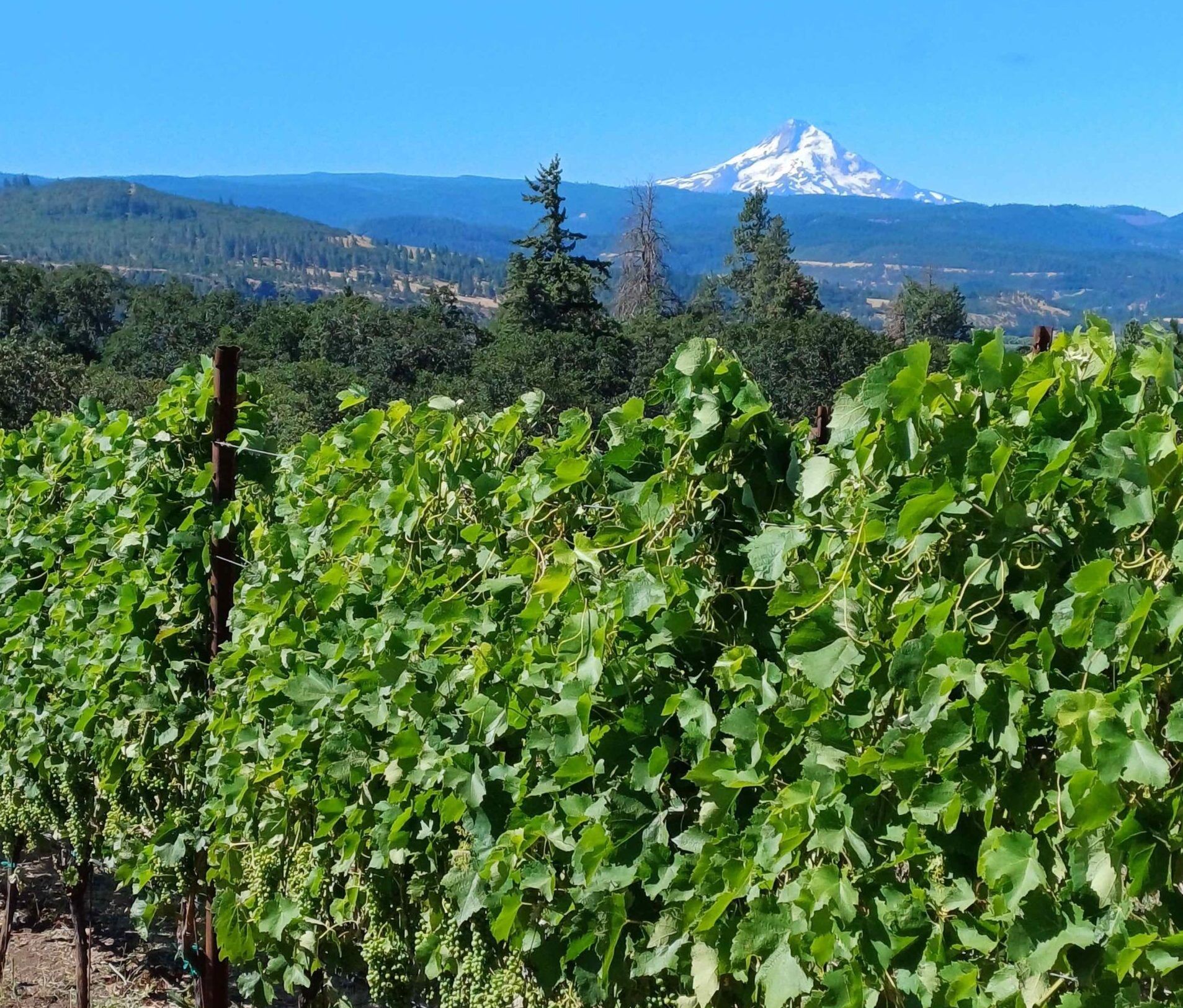“The elephant in the room, though, when it comes to Washington State wines is price. The UK is a notoriously price-conscious market and many a winery’s ‘entry level’ wines start at well over $30,” writes Dougherty.
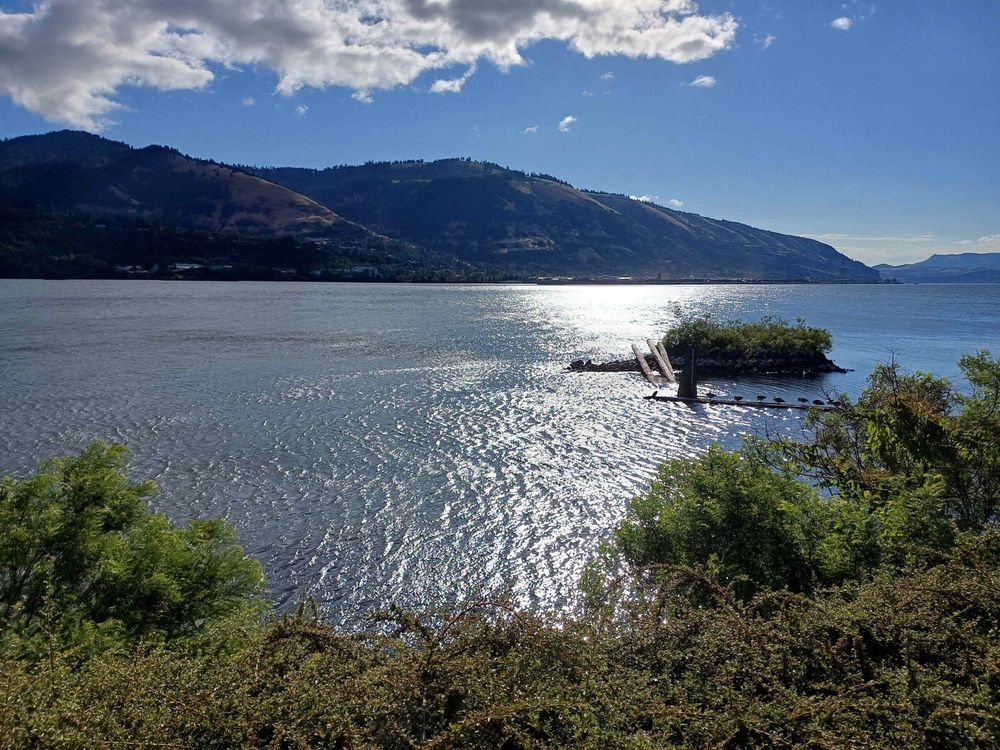
Washington State is so windy that the Columbia River is a haven for wind-surfers
Washington State’s message to wine consumers in the UK must be pretty simple: Yes, we make wine and No, we’re not Washington DC, but Washington State, in the Pacific Northwest. But when it comes to the trade, where hopefully we’ve got over those two initial stumbling blocks, what is the message? What is Washington’s place in the wine ecosystem here in the UK? And what challenges face the region?
Washington State’s vineyards more or less follow the path of the Columbia River east of the Cascade Mountains, which create one of the most pronounced rain shadow effects in any wine region I’ve encountered. Some vineyards see less than 100mm of rain per annum – so irrigation is imperative and land without precious water rights is essentially agriculturally worthless.
Chris Upchurch, a founder of one of the flagship wineries in the state, Delille, and now revelling in the freedom of his own Upchurch Vineyard, defined Washington’s wine country as “high plains desert with soil.” I might add windy to that definition.
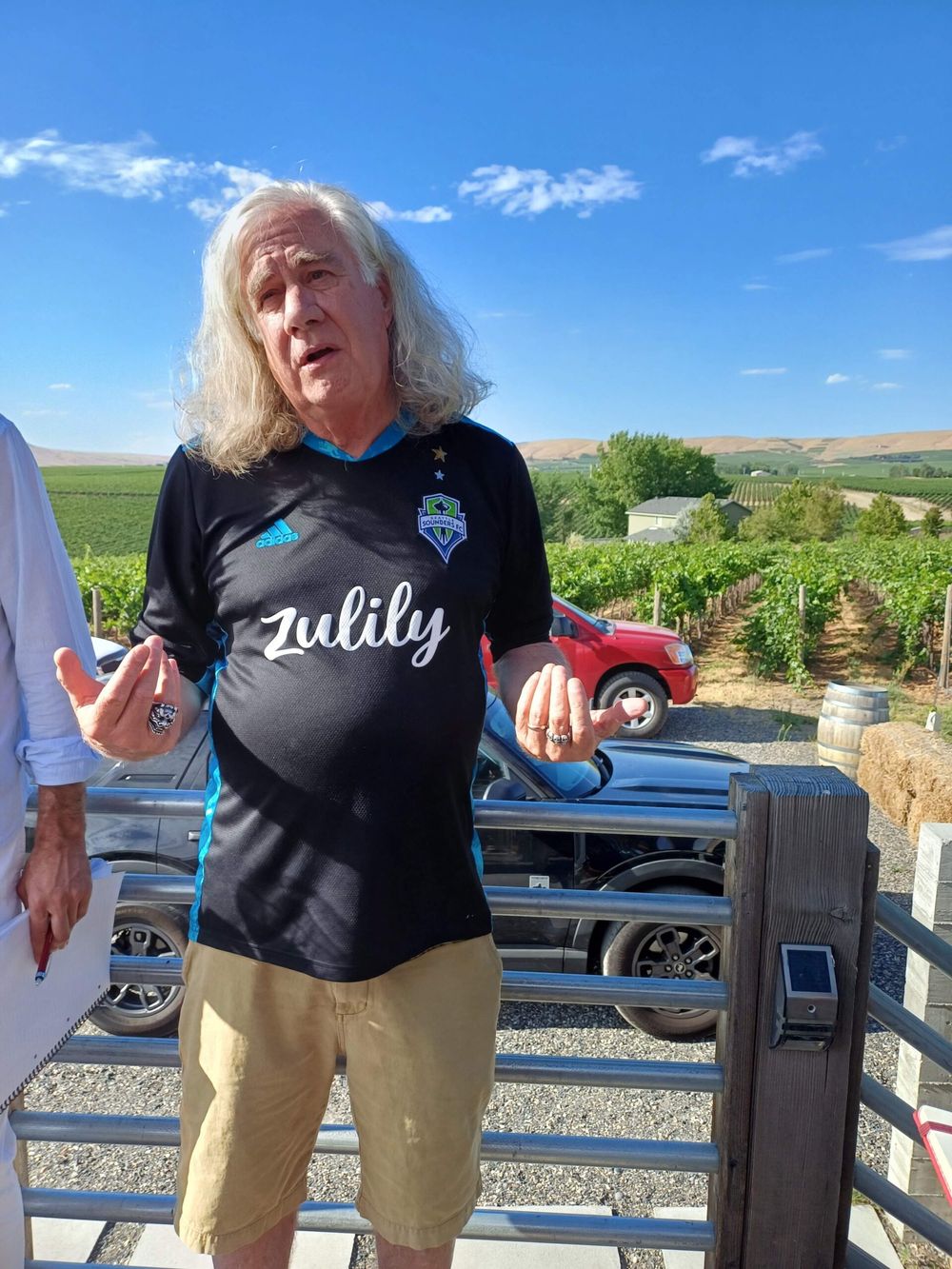
Washington State wines are made in “high plains desert with soil”: Chris Upchurch
The climate is fiercely continental, with cold winters and usually a short, hot growing season. There can be nasty surprises – late and early frosts are a threat; in 2022 there was a freak blizzard in mid-April. And the wind is a constant: well over 100 miles inland, the Columbia River is a renowned centre for wind- and kite-surfing. In the more wooded Columbia Gorge AVA (American Viticultural Area), wildfires are a real threat to vineyards.
On a recent visit, I encountered some great Cabernet from Red Mountain (including Upchuch and Hedges Family Estate), world class Syrah from Walla Walla at Reynvaan Family Estate, as well as a plethora of other varieties from the likes of the Rhône (Grenaches Blanc and Noir, Viognier and Marsanne), Languedoc (Piquepoul), Spain (Carignan and Mourvèdre), Austria (Grüner Veltliner) and even Hungary (Furmint) in the small selection of wineries that we visited. Over 80 varieties are planted – a number that has doubled in the last 5 years.
Perhaps then, the message is one of diversity?
It shouldn’t surprise us that Columbia Gorge, one of the westernmost AVAs in the state, which straddles the ‘border’ with Oregon, excels in different varieties than Walla Walla, a three-hour drive to the east. If you set out from a vineyard in Chianti and drive for three hours, you could be among the vines that produce Franciacorta, so perhaps it’s natural that the sweep of Washington State wines can’t be boiled down to one straightforward, easily digestible message. It’s also a very young region, only 40-odd years old, so to expect it to have settled on which varieties suit which rich mix of soils and terroirs is premature.
The two leading varieties are Cabernet Sauvignon (28% of the total crush) and Chardonnay with 16%. There is over twice as much Cabernet harvested than its nearest rivals, Merlot and Syrah. Riesling is a much closer competitor to Chardonnay.
So where does the UK sit in Washington’s plans?
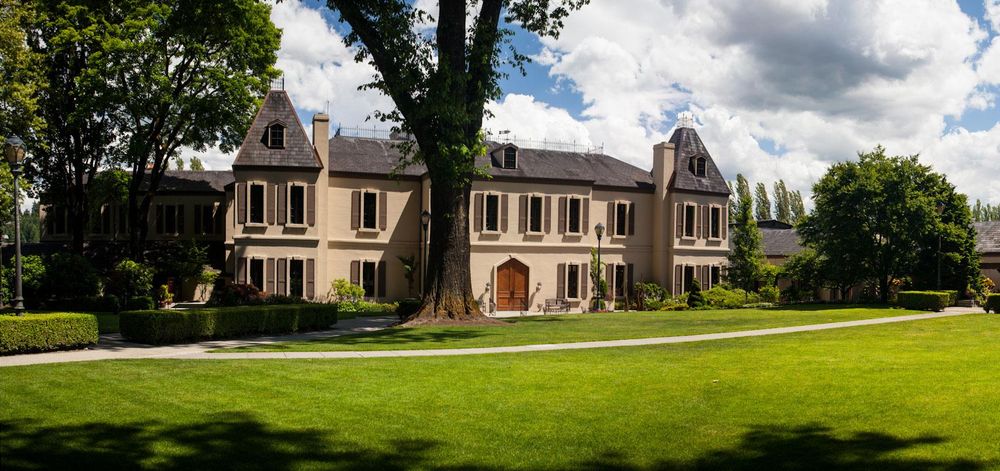
Cutting grape supply by 40%: Chateau Ste Michelle
Currently the UK is the 5th biggest export market by value, behind Canada, Sweden, Germany and South Korea (bet you weren’t expecting that), with a spend of $1.7 million in 2019/20. Wineries are finding a foothold in the UK market via importers including Ally Wines and The Wine Treasury.
You can’t talk about Washington wine without talking about Chateau Ste Michelle – in many ways they are Washington wine, accounting for 54% of production by volume – and the majority of the 5% of wine that is exported. If Washington wants to build its exports, the route to growth has to go through Chateau Ste Michelle.
But there was bad news for the state’s growers recently when Chateau Ste Michelle’s parent company, Ste Michelle Wine Estates (SMWE), announced that it will be reducing its grape requirements from growers by a brutal 40% for the coming year. The Washington State Wine Commission’s figures list an acreage of over 60,000 in 2021. I’ve seen reports that SMWE bought grapes from 35,000 acres in 2017, but it seems that figure may have already dropped before the recent 40% reduction announcement.
Washington State has a production model whereby many wineries own few, if any, vines themselves, relying on grapes bought from specialist growers. These 400 plus growers serve to supply over 1,000 wineries, many of which are small – 90% of them produce under 5,000 cases. If SMWE is slashing its requirement for grapes, it will create an immediate glut of grapes on the market, subduing prices. In the longer term it will provide a headache for those growers who have been earning a decent income selling their grapes to SMWE: do they switch from grape growing to another crop (Washington is a renowned source of fresh produce) or have a go at becoming winemakers themselves? Neither option is cost- or risk- free.
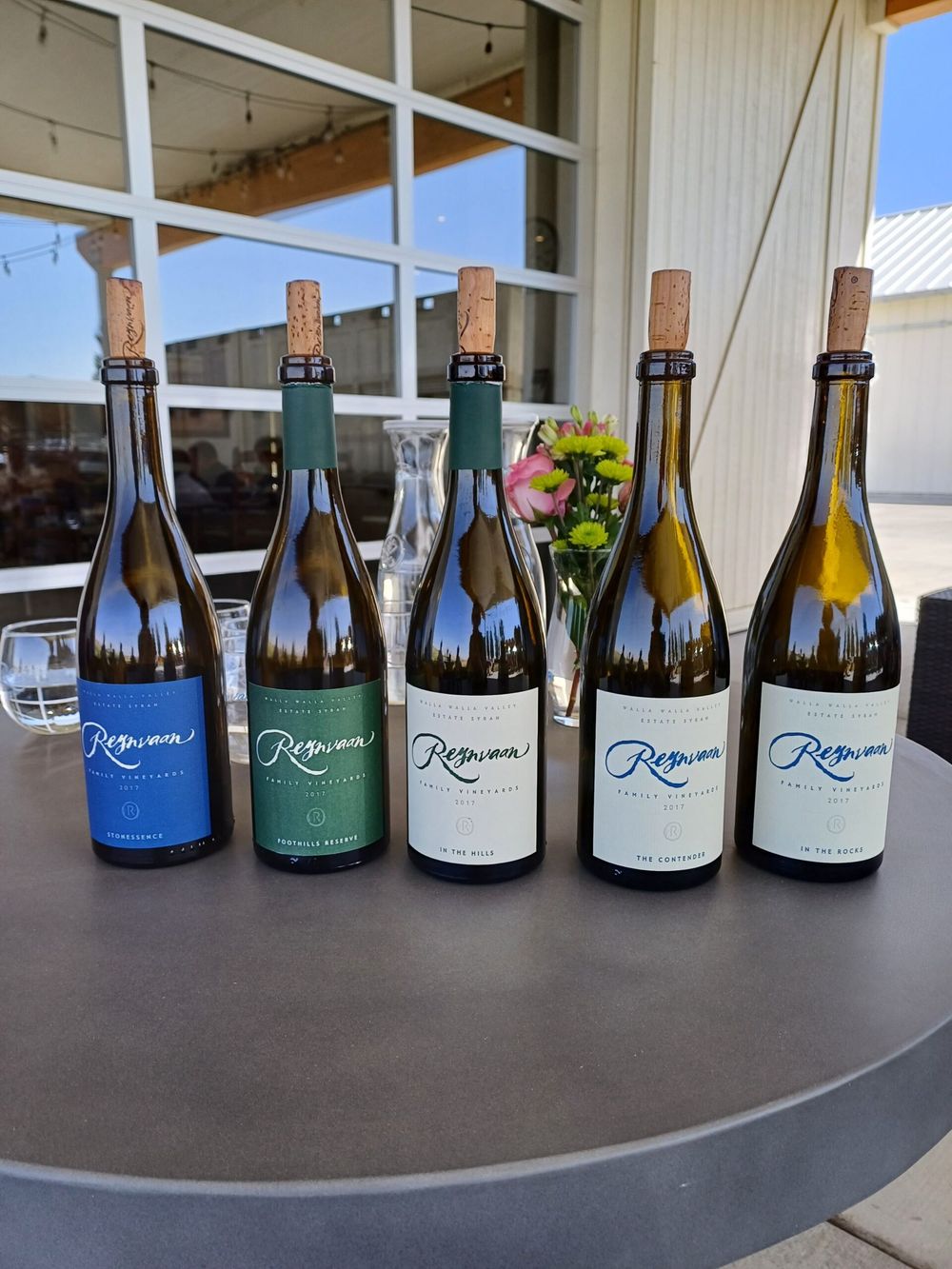
Syrah from Walla Walla at Reynvaan Family Estate is world class
More challenges Washington needs to overcome
Other challenges face the region: phylloxera was thought not to pose a threat, as it would not be able to survive the cold winters, but it has been discovered in Walla Walla and elsewhere, necessitating replanting on rootstocks.
The vine-growing areas are also remote, a four-hour drive from the major population centres of either Seattle or Portland (in Oregon). Wineries have come up with a novel solution to this last one: setting up wineries, or sometimes just tasting rooms, in Woodinville, 40 minutes’ drive north of Seattle. There are already dozens of such wineries and tasting rooms and it is still expanding.
The elephant in the room, though, when it comes to Washington State wines is price. The UK is a notoriously price-conscious market and many a winery’s ‘entry level’ wines start at well over $30, putting them firmly in the premium category over here. One of their calling cards is Cabernet Sauvignon and Bordeaux blends – and unfortunately this means taking on the competition, not just in Europe, but across the New World, which in many cases will be cheaper.
Washington State has many natural advantages, including vineyards at altitude, with scope in places to go higher, as well as low disease pressure thanks to a low humidity climate. Add to that the diversity of terroirs and varieties being grown, as well as a young industry that is highly motivated and focused on growth and there are reasons for optimism.
The quality of the wines is not in doubt and, for UK on-trade looking for wines with a great back story from a young region with an extreme climate which can make wines of power and intensity but also poise and elegance, Washington State can be compelling.
